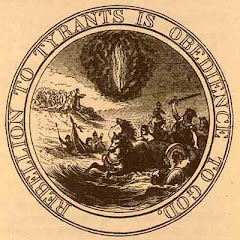As I listen to the weird science associated with global warming, it reminds me of problems I had with students while teaching Introductory Biochemistry Laboratory and Biochemical and Environmental Measurement courses to undergrads as a graduate student. Like those poor souls, people try to extrapolate beyond the mark and interpret data in a way that’s both inaccurate and misleading.
Part of our experiments involved teaching them how to use internal and external standards. Given that the global warming debate cannot possibly incorporate an internal standard, I will restrict my stories to the latter type. Students measured out carefully portions of a standard of known concentration and measured the responses of instrumentation in the presence of those standards or their eventual derivatives. Then, they extracted and measured the unknowns and compared it to the standard curve.
For the protein concentration assay as an example, they measured bovine serum albumin from 5mg to 40mg per tube. Nobody actually measures protein in a tube; they care about the ratio of protein to carbohydrates or fat or other metabolites on a volumetric or mass basis. In this particular experiment, they mascerated a portion of a rat organ, separated out each of the biochemical fractions and then purified them prior to measurement. As each fraction became more pure, it became necessary to measure using a nonstandard concentration unit, in our case mg protein/tube.
This created two problems. First, when students forgot the measurement conventions, they faced trouble rectifying the final answers to rational answers. When you use alternative conventions in presenting your data, you must convert it into a convention that makes sense to those interpreting your data. Secondly, some of the samples yielded concentrations outside their standard curve. Many students simply extrapolated the curve beyond the original limits and assumed their measurement accurate. Outside the confines of those standards, however, they do not know how the concentration corresponds to the measurement in use. A sigmoidal, parabolic, or asymptotic relationship might exist, thereby negating the value of their data.

Most global warming data excludes outliers and covers a limited period. Most measurements lack good controls. Most experiments include too many variables. As such, their data usually falls outside their standard curve. To compensate, they simply extrapolate data from times when measurements exists to distal time periods of exigent scientific relevancy. The problem is that most scientific events involving energy, including global warming, follow the pattern of a wave, meaning that if you track along the rise or the fall of the curve, you assume a pattern of behavior that doesn’t even come close to telling the true story.
This is just another example of bad science.
Part of our experiments involved teaching them how to use internal and external standards. Given that the global warming debate cannot possibly incorporate an internal standard, I will restrict my stories to the latter type. Students measured out carefully portions of a standard of known concentration and measured the responses of instrumentation in the presence of those standards or their eventual derivatives. Then, they extracted and measured the unknowns and compared it to the standard curve.
For the protein concentration assay as an example, they measured bovine serum albumin from 5mg to 40mg per tube. Nobody actually measures protein in a tube; they care about the ratio of protein to carbohydrates or fat or other metabolites on a volumetric or mass basis. In this particular experiment, they mascerated a portion of a rat organ, separated out each of the biochemical fractions and then purified them prior to measurement. As each fraction became more pure, it became necessary to measure using a nonstandard concentration unit, in our case mg protein/tube.
This created two problems. First, when students forgot the measurement conventions, they faced trouble rectifying the final answers to rational answers. When you use alternative conventions in presenting your data, you must convert it into a convention that makes sense to those interpreting your data. Secondly, some of the samples yielded concentrations outside their standard curve. Many students simply extrapolated the curve beyond the original limits and assumed their measurement accurate. Outside the confines of those standards, however, they do not know how the concentration corresponds to the measurement in use. A sigmoidal, parabolic, or asymptotic relationship might exist, thereby negating the value of their data.

Most global warming data excludes outliers and covers a limited period. Most measurements lack good controls. Most experiments include too many variables. As such, their data usually falls outside their standard curve. To compensate, they simply extrapolate data from times when measurements exists to distal time periods of exigent scientific relevancy. The problem is that most scientific events involving energy, including global warming, follow the pattern of a wave, meaning that if you track along the rise or the fall of the curve, you assume a pattern of behavior that doesn’t even come close to telling the true story.
This is just another example of bad science.






No comments:
Post a Comment